Have you ever heard of sizzling steak fajitas? What are steak fajitas? They’re a Tex-Mex favorite! Imagine strips of juicy, flavorful steak cooked with colorful bell peppers and onions. These yummy ingredients are usually served hot off the grill on warm tortillas. You get to build your own perfect bite!
Fajitas started out as a simple meal for Mexican cowboys, called vaqueros. They cooked tough cuts of beef over an open fire. Today, fajitas are a popular dish all over the world. People love them because they’re delicious and you can customize them with your favorite toppings.
Steak fajitas are a fun and interactive meal. Everyone can choose their own toppings and create a fajita that’s just right for them. It’s like a build-your-own taco party! They are perfect for a family dinner, a party with friends, or even a quick weeknight meal. Want other delicious meal ideas? Check out this recipe for the ultimate breakfast casserole.
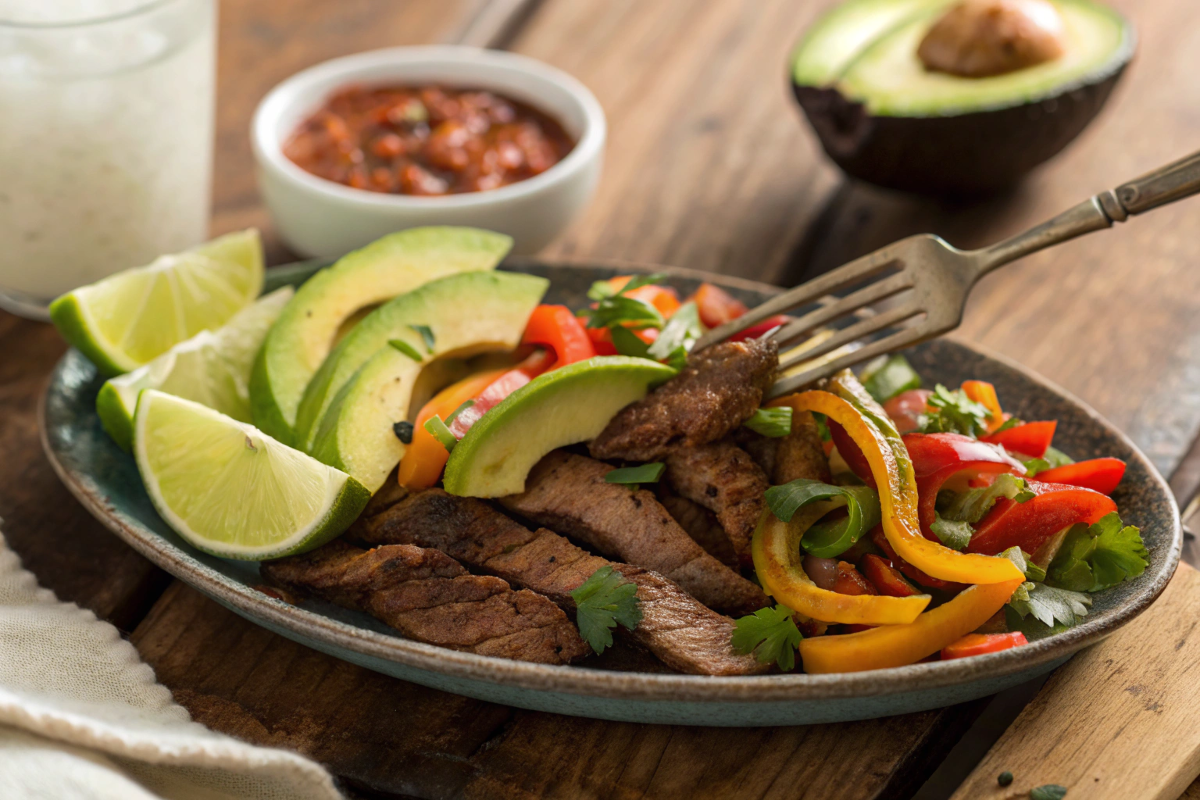
The Best Cut of Steak for Fajitas
Choosing the right steak is important for delicious fajitas. You want a cut that’s flavorful and will be tender when cooked quickly over high heat. Let’s look at some popular choices.
Flank steak and skirt steak are both great options. They come from the belly of the cow and have a lot of flavor. They’re also naturally a bit tough, but a marinade helps tenderize them. Another good choice is sirloin steak. It’s leaner than flank or skirt steak but still has good flavor.
For the best fajitas, flank steak or skirt steak are recommended. They soak up the marinade really well and get nice and tender on the grill. Sirloin can be a bit tougher if not cooked carefully. Looking for a decadent dessert? Try these cheesecake brownies.
After you choose your steak, it’s important to slice it correctly. Look closely at the steak and you’ll see lines running through it. That’s the grain. You want to cut against the grain, not with it. This means your knife should go across those lines.
Slicing against the grain makes shorter muscle fibers. This makes the steak easier to chew and much more tender when you bite into your delicious fajita! Aim for thin slices, about ¼ inch thick. Thin slices cook quickly and stay tender.
Mastering the Marinade: Flavor is Key
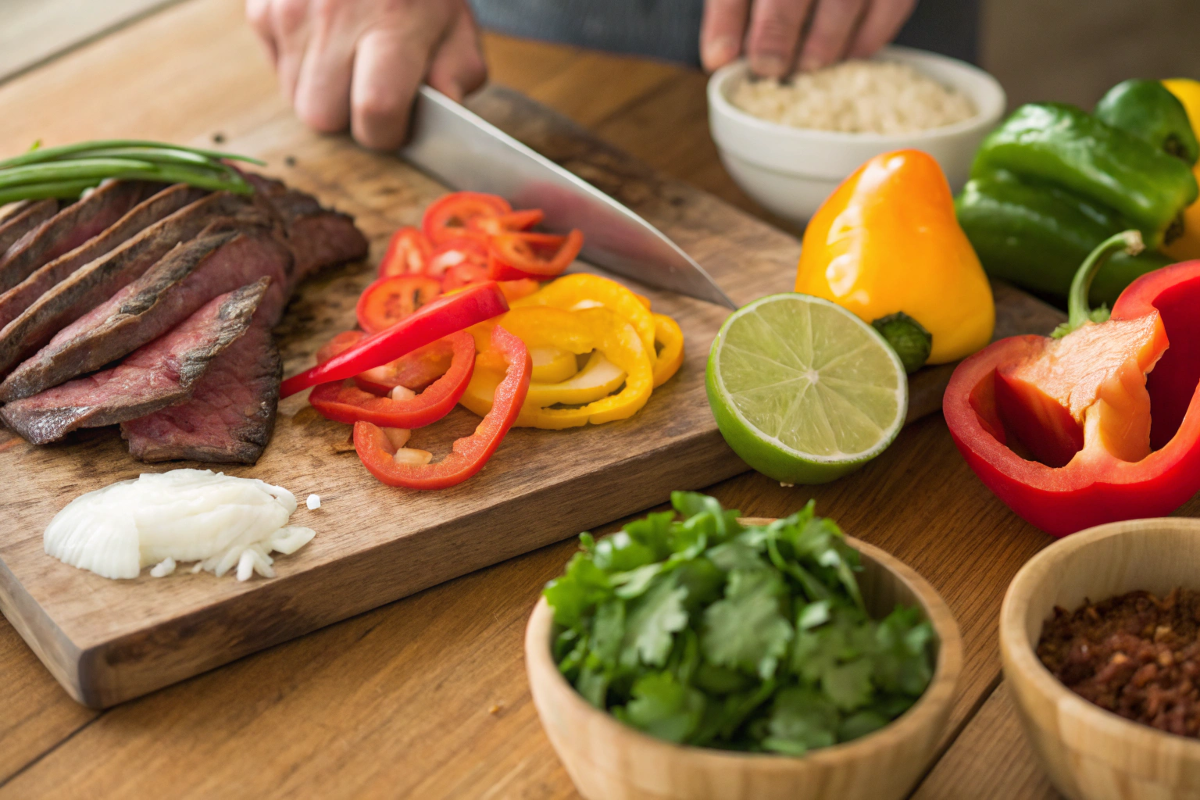
Marinating your steak is a must for amazing fajitas. It adds flavor and helps make the meat tender. A good marinade has a few key parts: acid, oil, and seasonings.
The acid, like lime or lemon juice, helps break down tough proteins in the steak. This makes it more tender. The oil helps the marinade stick to the steak and keeps it moist while cooking. And of course, the seasonings add flavor!
Here’s a simple but tasty marinade:
- ¼ cup lime juice: Adds a bright, citrusy flavor and tenderizes the steak.
- ¼ cup soy sauce: Gives the marinade a salty and savory depth.
- 2 tablespoons olive oil: Keeps the steak moist and helps distribute the flavors.
- 4 cloves garlic, minced: Adds a pungent and savory kick.
- 1 teaspoon chili powder: Provides a warm and smoky flavor.
- ½ teaspoon cumin: Adds an earthy and warm note.
Mix all these ingredients in a bowl or zip-top bag. Add your steak, making sure it’s coated all over.
You can marinate the steak for as little as 30 minutes, but for the best flavor, let it sit for at least 2 hours, or even overnight in the refrigerator. The longer it marinates, the more flavorful and tender it will be. Just remember, marinating too long (over 24 hours) can make the meat mushy. For a fun side dish, try making crispy fried cornbread.
Sizzling Success: The Art of Cooking Steak Fajitas
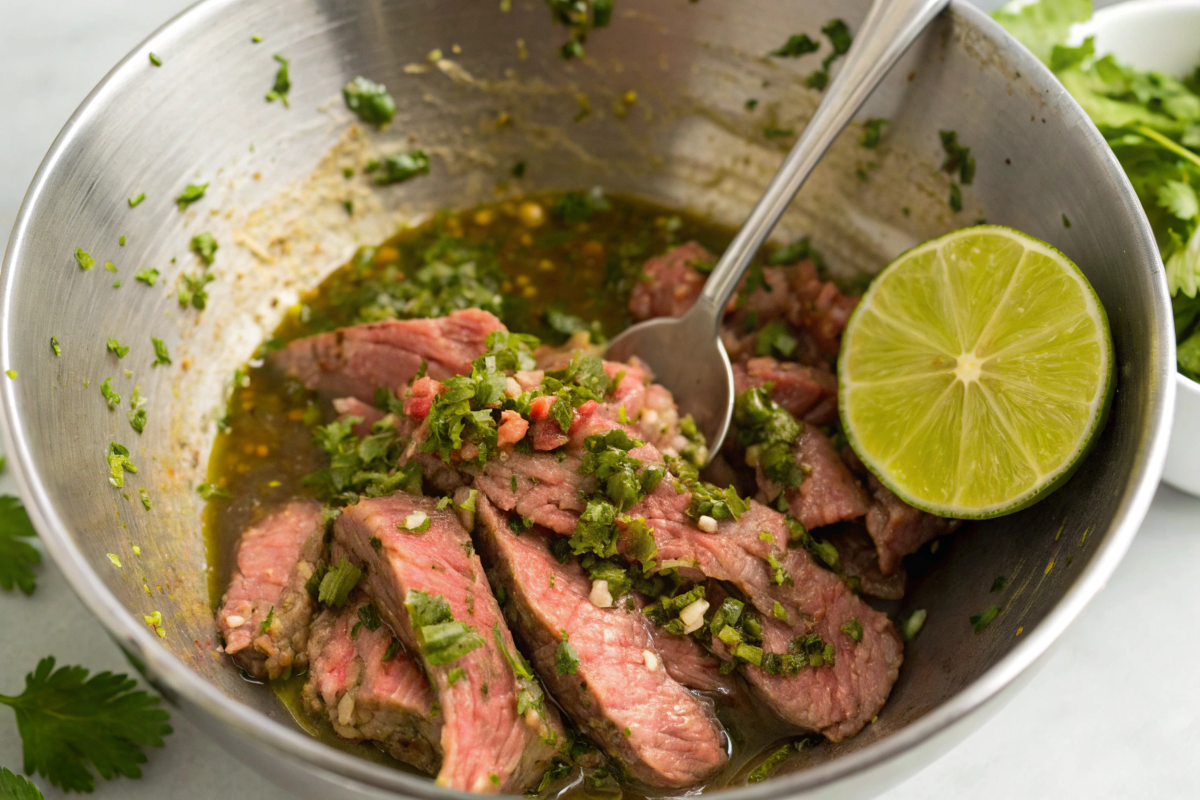
Cooking steak fajitas is all about high heat and quick cooking. This keeps the steak tender and juicy. You have a few options: grilling, pan-searing, or broiling.
Grilling: Preheat your grill to high heat. Grill the steak for 3-5 minutes per side for medium-rare, adjusting the time for your desired doneness.
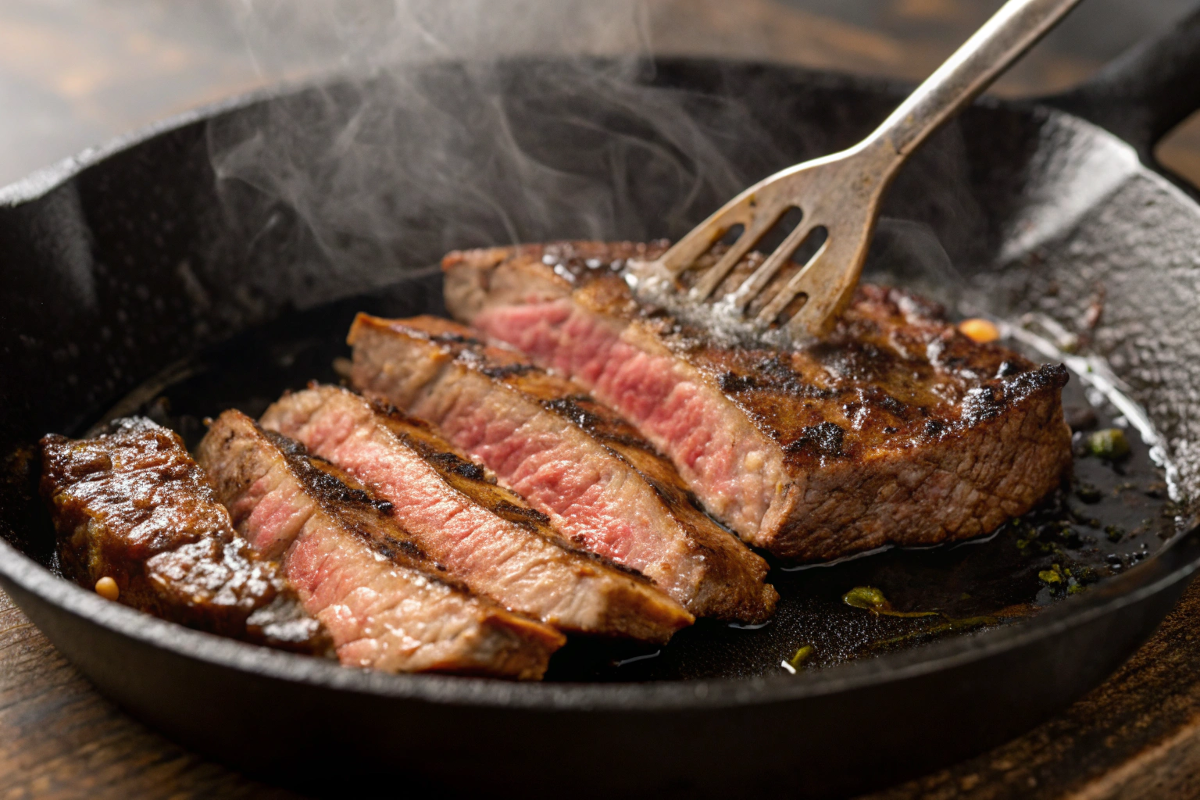
Pan-Searing: Heat a large skillet over high heat with a little oil. Sear the steak for the same amount of time as grilling, 3-5 minutes per side for medium-rare.
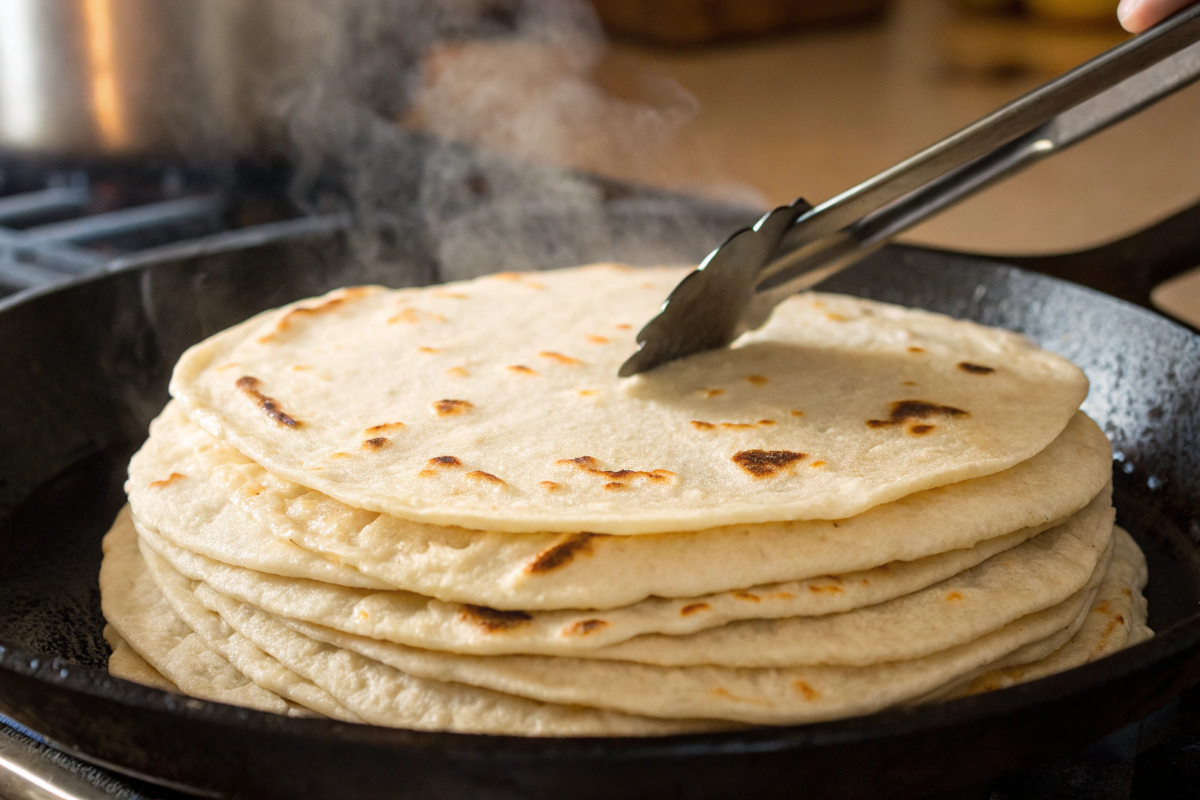
Broiling: Place the steak on a broiler pan a few inches from the heat source. Broil for 3-5 minutes per side for medium-rare. Check out these amazing steak fajitas for more inspiration.
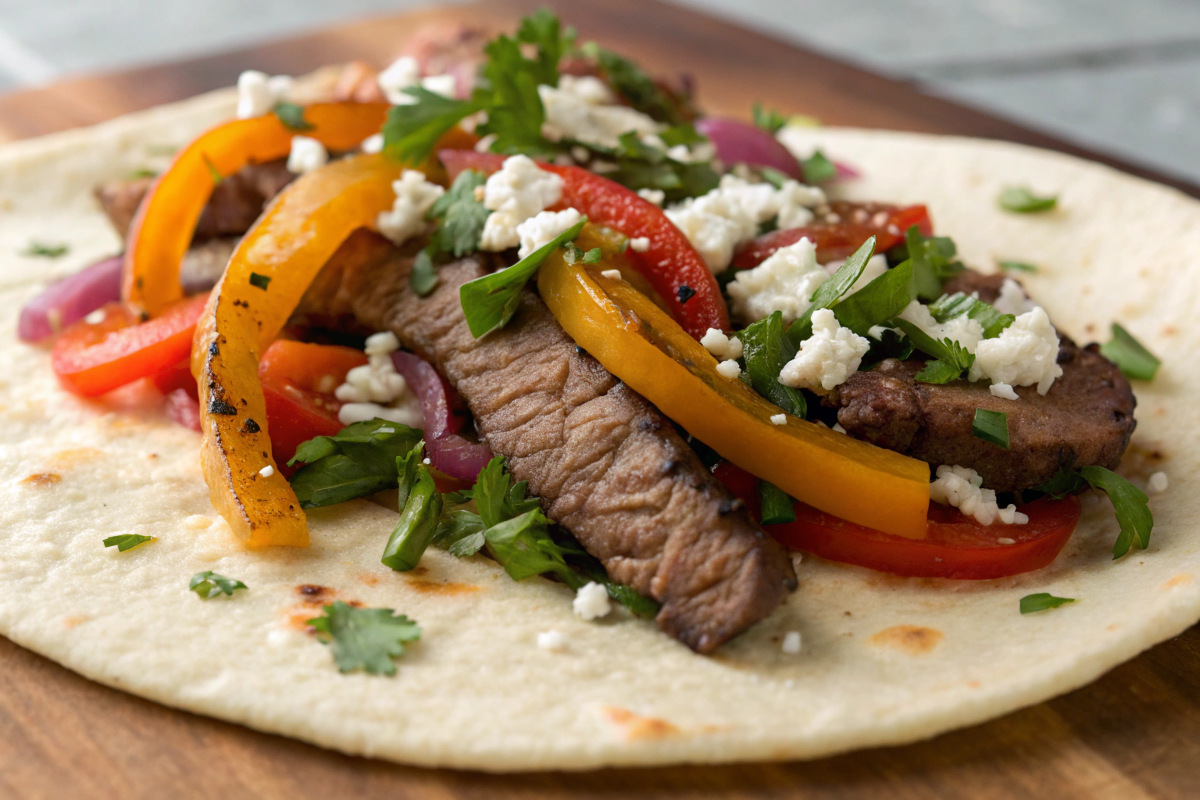
No matter which method you choose, make sure the steak is cooked to your liking. Use a meat thermometer to check the internal temperature.
While the steak cooks, toss sliced bell peppers and onions with a little oil, salt, and pepper. Add them to the grill pan or a separate skillet during the last few minutes of cooking time. You want them to be tender-crisp, not mushy. Everything should be cooked and ready to serve at the same time for the best fajita experience. Remember to let the steak rest for a few minutes before slicing to keep it juicy. For a sweet treat to complement your meal, try these mini cinnamon rolls.
Building the Perfect Fajita: Beyond the Steak
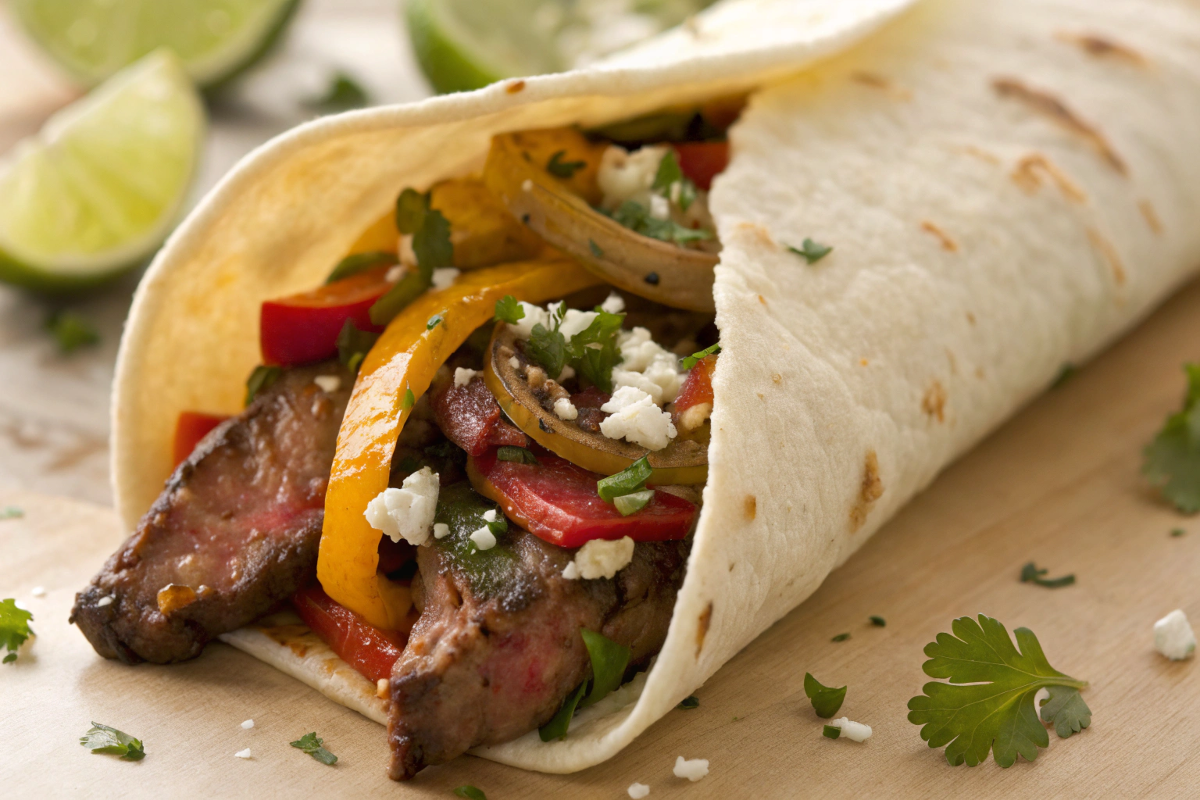
Once you have your sizzling steak and veggies, it’s time to build your fajita! Warm tortillas are a must. They hold all the delicious fillings and make each bite perfect. You might also enjoy a chicken fajita variation.
You have lots of topping choices! Classic options include:
- Salsa: Adds a spicy kick. Try different kinds, like mild, medium, or hot!
- Guacamole: Creamy and cool, it balances out the spice.
- Sour Cream: Adds a tangy coolness.
- Shredded Cheese: Melty cheese makes everything better! Cheddar, Monterey Jack, or a Mexican blend all work well.
Get creative with your toppings! Try pico de gallo for a fresh salsa, or add shredded lettuce for some crunch. A dollop of Greek yogurt can be a healthier alternative to sour cream.
Warming your tortillas is important. It makes them softer and easier to fold. You can warm them in a dry skillet over medium heat for a few seconds per side. Or, wrap them in a damp paper towel and microwave for 30-60 seconds.
You can use different types of tortillas, too. Flour tortillas are the most common, but corn or whole wheat tortillas add a different flavor and texture.
For sides, rice and beans are classic choices. Spanish rice and refried beans are delicious and easy to make. A simple salad can add a fresh element to your meal.
Frequently Asked Questions
What are steak fajitas used for?
Steak fajitas are a main dish, perfect for any occasion. They’re great for a casual weeknight dinner because they’re quick and easy to make. But they’re also fancy enough for a party or celebration. Everyone loves building their own fajitas! They’re fun, flavorful and satisfying.
Steak fajita recipe
For delicious steak fajitas, you’ll need flank steak or skirt steak, bell peppers, onions, and tortillas. First, marinate the steak (see “Mastering the Marinade” for a great recipe). Then, cook the steak and veggies over high heat (“Sizzling Success” has all the cooking tips). Finally, warm your tortillas and load them up with the steak, veggies, and your favorite toppings (“Building the Perfect Fajita” has topping ideas).
What are steak fajitas sauce?
There’s no single “steak fajitas sauce.” Instead, people use different toppings to add flavor. Popular choices include:
- Salsa: A tomato-based sauce with onions, peppers, and spices.
- Guacamole: Mashed avocado with lime juice, onions, and cilantro.
- Sour Cream: A cool and tangy cream.
- Cheese Sauce: A warm, cheesy sauce, often made with cheddar cheese.
Steak fajitas marinade
A marinade is key for tender and flavorful fajitas. It needs three main things: acid (like lime juice), oil, and seasonings. The acid helps tenderize the meat, the oil keeps it moist, and the seasonings add flavor! Check out “Mastering the Marinade” for a detailed recipe and explanation of why each ingredient is important.
Conclusion: Enjoy Your Fiesta of Flavor!
Making great steak fajitas is all about choosing the right cut of meat, using a flavorful marinade, and cooking it hot and fast. Don’t forget the warm tortillas and your favorite toppings!
Fajitas are awesome because you can customize them. Try different toppings, experiment with new seasonings, or even use a different kind of tortilla. Get creative and make it your own!
Now it’s your turn! Try making steak fajitas at home. They’re easier than you think. Share your fajita creations with friends and family. Let us know your favorite topping combinations!
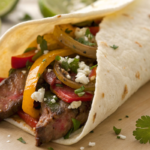
What Are Steak Fajitas?
- Prep Time: 6
- Cook Time: 10
- Total Time: 16 minutes
- Category: dinner
- Method: N/A
- Cuisine: america
Description
-
Sizzling steak, vibrant veggies, and warm tortillas make these fajitas a fiesta in your mouth!
Ingredients
1. ¼ cup Lime Juice
2. ¼ cup Soy Sauce
3. 2 tablespoons Olive Oil
4. 4 cloves Garlic, minced
5. 1 teaspoon Chili Powder
6. ½ teaspoon Cumin
7. 1 Bell Pepper (any color), sliced
8. 1 Onion, sliced
9. Tortillas
10. Toppings of your choice (salsa, guacamole, sour cream, shredded cheese)
Instructions
1. In a bowl or zip-top bag, combine lime juice, soy sauce, olive oil, garlic, chili powder, and cumin to make the marinade.
2. Add steak to the marinade, ensuring it’s coated on all sides. Marinate for at least 2 hours, or up to overnight, in the refrigerator.
3. Slice steak against the grain into thin strips, about ¼ inch thick.
4. Preheat grill or large skillet to high heat.
5. If using a skillet, add a small amount of oil.
6. Cook steak for 3-5 minutes per side for medium-rare, or until desired doneness is reached.
7. While steak cooks, toss sliced bell peppers and onions with a little oil, salt, and pepper.
8. Add peppers and onions to the grill or skillet during the last few minutes of cooking time until tender-crisp.
9. Warm tortillas according to package instructions.
10. Serve steak and vegetables on warm tortillas with desired toppings.
Notes
Marinate steak longer for a more intense flavor. Adjust cooking time based on desired doneness. Get creative with toppings!
Nutrition
- Serving Size: N/A
- Calories: N/A
- Sugar: N/A
- Sodium: N/A
- Fat: N/A
- Saturated Fat: N/A
- Unsaturated Fat: N/A
- Trans Fat: N/A
- Carbohydrates: N/A
- Fiber: N/A
- Protein: N/A
- Cholesterol: N/A
Keywords: Steak Fajitas, Fajitas, Steak, Tex-Mex, Mexican Food, Grilling, Easy Dinner, Weeknight Dinner, Family Dinner Nutritional Information (Approximate):